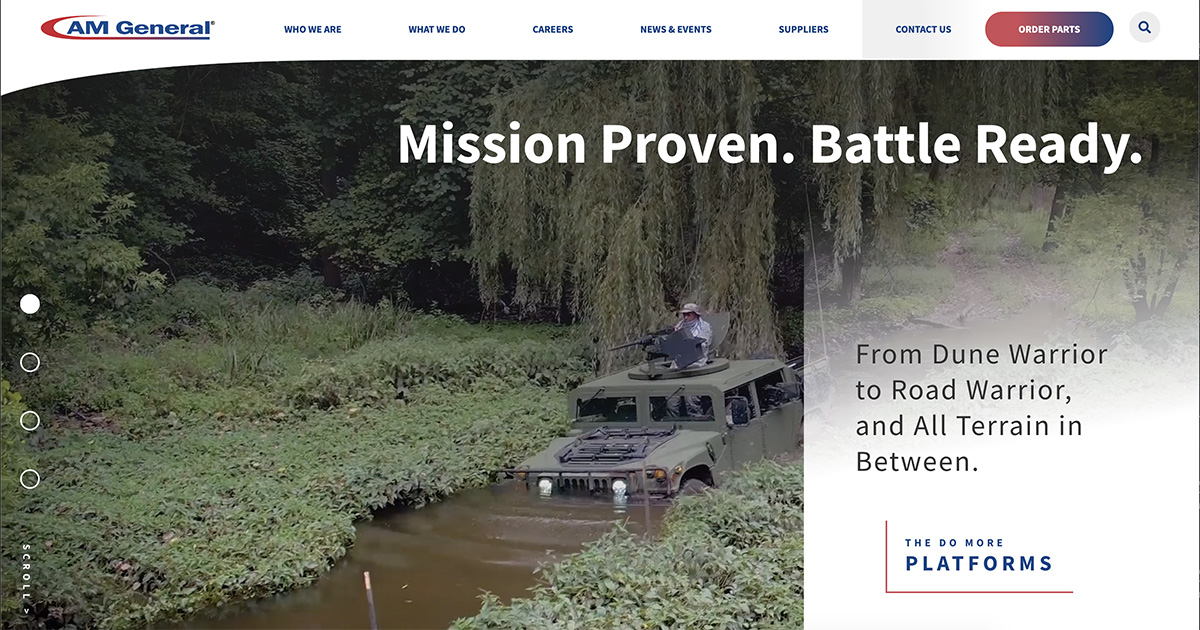CHARLOTTE, North Carolina — Brig. Gen. Beth Behn, the Army’s chief of transportation, spent a large chunk of 2023 in eastern Ukraine observing the ongoing war there before taking over her current role.
What she saw changed her thinking about the some 200,000 tactical wheeled vehicles her command employs to move soldiers and supplies on battlefields.
“I came back from Ukraine with my hair on fire to modernize our doctrine, our training and, of course, our equipment,” she said at the National Defense Industrial Association’s annual Tactical Wheeled Vehicles Conference held recently on the outskirts of Charlotte, North Carolina.
Her main takeaway: what the Army has been predicting as the battlefield of 2030 is here and now in Ukraine.
The words “future operating environment” are already moot, she said.
“This is an expanded battlefield in terms of time, geography, domains and actors. So, we’ve got to think about minimizing the size and the visibility of our support areas. We’ve got to mask our sustainment efforts. We’ve got to frequently relocate stocks or support capabilities. If you can be seen, you can be targeted. And if you can be targeted, you had better be able to hide or move fast,” she said.
As one of the leaders who shapes requirements for the Army’s small, medium and heavy tactical wheeled vehicles, she had a long to-do list to modernize the fleets and make them more survivable.
New armor was absent from the list.
First, they must operate over extended or exposed lines of communication.
They must be able to extend their range without increasing fuel demand.
“We’ve got to get beyond reactive maintenance and get to a proactive decision-based approach,” she said.
Artificial intelligence can be used for that and to chart ideal routes to minimize exposure and save fuel.
Advanced manufacturing should be used to create parts to sustain tactical wheeled vehicles during widely distributed operations.
They must be more mobile, and they have got to be able to integrate advanced communications equipment and maintain the ability to mount weapon systems or other kits and then traverse rough terrain off or on improved roads.
“We’ve got a lot of work to do,” she concluded with perhaps one of the more notable understatements of the conference.
Brig. Gen. Samuel Peterson, program executive officer for combat support and combat service support, is the Army’s point person in charge of modernizing the service’s tactical wheeled vehicle fleets.
The office has four modernization priorities: autonomy, electrification, fuel demand reduction and predictive logistics, he said.
“These are the capabilities that are going to enable us to succeed in a multi-domain environment. And we need industry’s partnership on all of these fronts,” he added.
As far as autonomy and electrification, the Army has put out a lot of requests for information to contractors, but some testing activities were delayed until Congress finally passed a fiscal year 2024 defense appropriation in March.
Steve Roberts, project lead for integration in Program Executive Office Combat Support and Combat Service Support, said for now the Army is going after “low-hanging fruit” when it comes to saving fuel. One example is anti-idling systems. Like what’s available in the consumer market, these systems turn the engine off but can keep things on like heaters, air conditioners and other vital systems using lithium-ion batteries.
“That way you can sit on station for three, four hours without running that engine” while keeping sensors, radios and climate control systems running, he said.
The next step is hybridization, which can give a truck extra power. The program executive office is experimenting with the Family of Medium Tactical Vehicles and a vehicle integration power kit that can draw about 120 kilowatts off the vehicles. One use case showed that the trucks’ engines could help power a microgrid and reduce generator usage, he said.
“There is real operational savings by going to these electrified vehicles,” he said.
As far as all-electric, the ability at the tactical edge to recharge vehicles with large battery packs — needed even for light vehicles — is not feasible at this time, Roberts said.
“Each one of these steps — the crawl, walk, run — builds on the next, and we learn from them,” he said.
As far as robotic systems, the Army has kicked off the Autonomous Transport Vehicle System program — a follow-on to the Leader-Follower program, which has one truck in a convoy with a driver and the rest operating autonomously.
The Army issued three contracts for companies that are currently doing preliminary design review ahead of building prototypes, said Kyle Bruner, project manager for force projection.
Carnegie Robotics, Neya Systems and Robotic Research have been tapped by the Defense Innovation Unit and the PEO in a joint effort to develop autonomy kits called the Ground Expeditionary Autonomous Retrofit System, or GEARS, for the Palletized Load System. The kits could later be adapted for other types of vehicles, a DIU press release stated.
The goal is to have the first unit equipped by fiscal year 2026, Bruner said.
Not on the priorities list, but still vitally important, is to harden the cybersecurity requirements as potential opponents launch ever more sophisticated electronic warfare attacks, Peterson said.




